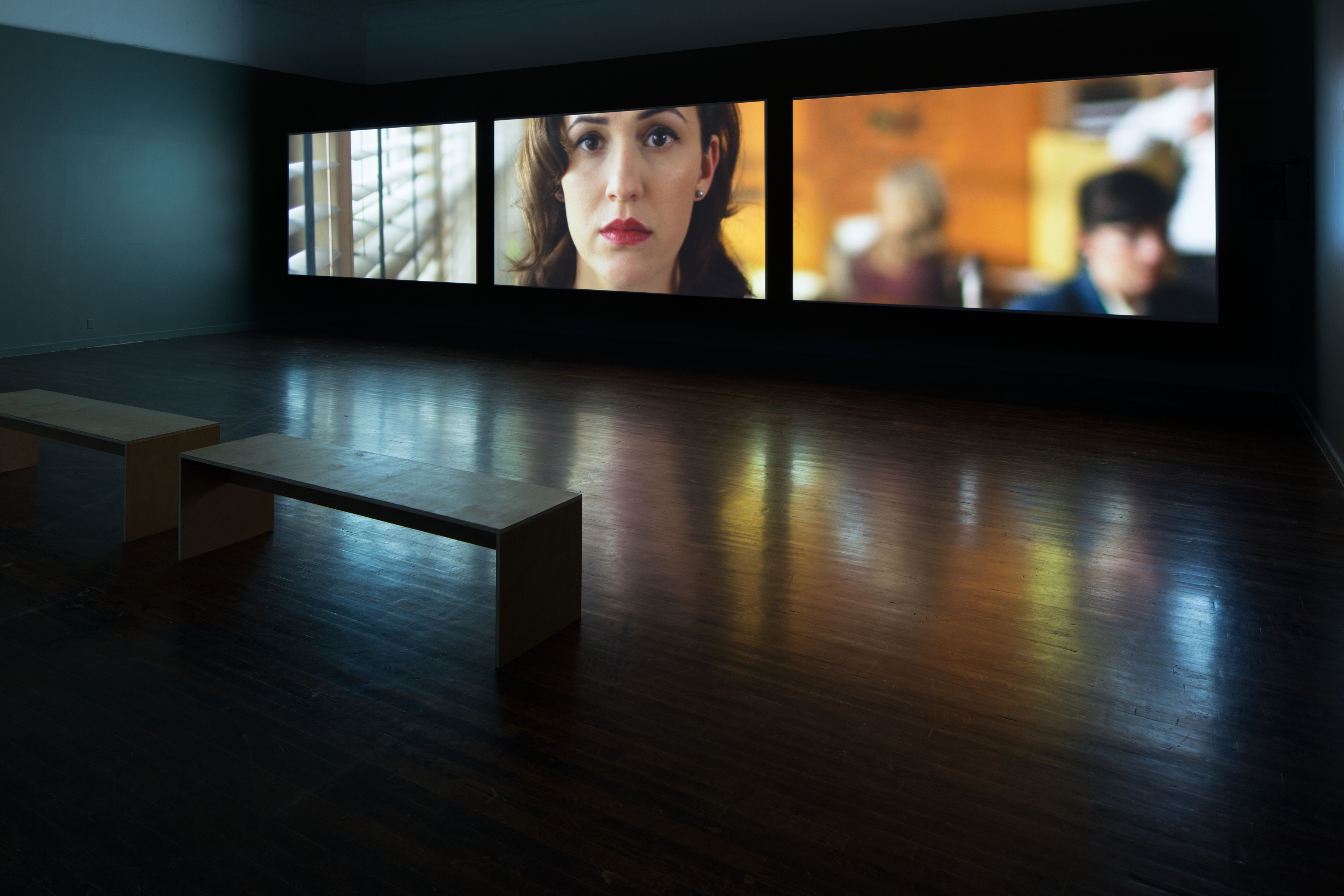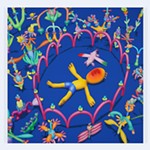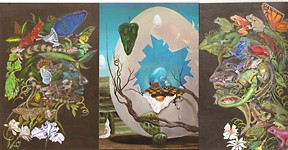“Teresa Hubbard/Alexander Birchler: Giant” at the Blanton Museum of Art
The film is good at showing the fate of the film set of Giant, but it leaves open the question of what's happened to Marfa
Reviewed by Sam Anderson-Ramos, Fri., Aug. 25, 2017
Giant, a film by "Austin- and Berlin-based" artists Teresa Hubbard and Alexander Birchler, features an imagined 1950s Hollywood studio office juxtaposed with scenes of a decrepit movie set outside Marfa, Texas. Young female secretaries sit at their desks typing letters, one of which we get to read along with. It is a contract seeking permission from local Marfa landowners to use their property as a set for the 1956 film Giant, starring Elizabeth Taylor, Rock Hudson, and James Dean. The set, a skeleton of deteriorating wood beams, is identified as the Reata mansion, a fictional ranch estate. Occasionally we see a woman with a large microphone exploring the ruins, capturing a soundtrack of rumbling wind, but the location is otherwise sans humans. The wood skeleton creaks and sways, upright but precarious, surrounded by the detritus that has already been torn away, left to rot on the ground nearby. We also see some wildlife: a large grasshopper, the glistening insides of a dead bird. One of the more spectacular moments captures a turbulent rainstorm pummeling the wild grass. The film is cinematic, three-channel and widescreen, a high-quality paean to its source material.
On a recent visit to Marfa, we visited a snake museum. "The largest live rattlesnake exhibit on the [illustration of a snake encircling the globe]." Inside was a dank room lined with handmade cases holding some massive, and dangerous, serpents. The proprietor wore head-to-toe camo and a white beard that hung to his sternum. He was reserved but friendly and happy to talk about the transformations he'd seen in Marfa and surrounds over the preceding decades, stating that he'd witnessed real estate prices booming since Donald Judd turned the town into an art mecca in the Seventies. It isn't difficult to imagine. Marfa is about the size of one of Austin's smaller neighborhoods. There's a single flashing traffic light on the main thoroughfare. It's the only place I've ever spent real time where I could see the edge of town from almost anywhere. Even now, after decades of change, Marfa is minuscule, but in such a small place, a minor development can significantly alter the landscape. Boutique shops sparkle on otherwise quiet, dusty blocks. The blinding white Hotel Saint George is the largest building in sight. We happened to stop for lunch at the Hotel Paisano, decorated with portraits of Elizabeth Taylor to commemorate her stay during the shooting of Giant. The contrast between West Texas grit and Tinseltown chic must have been even more startling back in 1956.
According to the statement for the exhibition, "Giant is the third part of a trilogy of films exploring the social character of the cinematic experience, with particular respect to film's relationship to place and the kinds of traces movies leave behind." Hubbard and Birchler's Giant does a good job of indicating the ultimate fate of what must have once been a glorious movie set: evaporation into an indifferent landscape, one that is vast and teeming with hardscrabble life. The ruins, at the outskirts of the Chihuahuan Desert, will one day disappear, merged with the sands. However, what goes unsaid in the film is the impact Hollywood, and subsequent waves of tourists and creatives, have had on Marfa itself. Far be it from me to say whether that impact has been positive or negative. I'll leave it to the proprietor of the snake museum, legs crossed at the ankles, surrounded by dust and animals he'd stuffed himself: "Judd didn't do us no favors."
“Teresa Hubbard/Alexander Birchler: Giant”
Blanton Museum of Art, 200 E. MLKwww.blantonmuseum.org
Through Oct. 1













